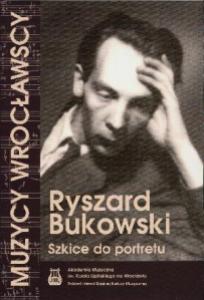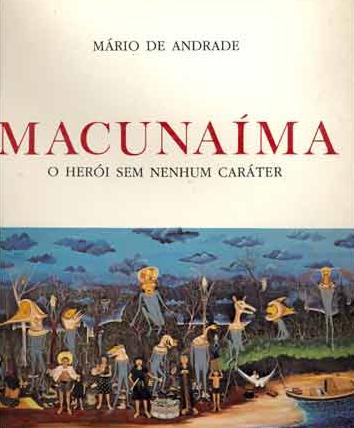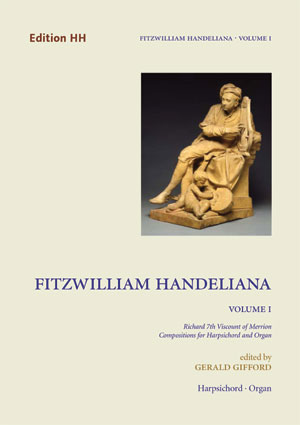In 2009 the Akademia Muzyczna im. Karola Lipińskiego in Wrocław launched Muzycy Wrocławscy, a series devoted to musicians of Wrocław and edited by Anna Granat-Janki. The inaugural volume, Ryszard Bukowski: Szkice do portretu, is dedicated to the composer, pedagogue, and publicist (1916–1987) who was one of the foremost leaders of postwar Polish culture. The volume collects papers presented at a conference held in 2007 at the Akademia commemorating the twentieth anniversary of Bukowski’s death; a table of contents in English is included.
Tag Archives: Composers
Muzycy Wrocławscy
Comments Off on Muzycy Wrocławscy
Filed under 20th- and 21st-century music, New series
A Charles Ives resource
 The Charles Ives Society maintains an online resource that includes a biography by Jan Swafford; a list of tunes borrowed by Ives from other composers, with sound files; a catalogue of Ives’s published works ordered by medium, also with sound files; a descriptive catalogue by James Sinclair ordered by genre, with incipits, performance data, and other listings; and a programming guide that suggests relationships between Ives’s works and specific holidays, months, seasons, topics, and anniversaries.
The Charles Ives Society maintains an online resource that includes a biography by Jan Swafford; a list of tunes borrowed by Ives from other composers, with sound files; a catalogue of Ives’s published works ordered by medium, also with sound files; a descriptive catalogue by James Sinclair ordered by genre, with incipits, performance data, and other listings; and a programming guide that suggests relationships between Ives’s works and specific holidays, months, seasons, topics, and anniversaries.
Above, a rare performance of one of Ives’s pieces for two pianos tuned a quarter-tone apart, played by the Paratore brothers. Today is the composer’s 136th birthday.
Filed under 20th- and 21st-century music, Resources
William Yeates Hurlstone
During the 1890s the Royal College of Music’s first Professor of Composition, Charles Villiers Stanford (1852–1924), had a stellar roster of students that included Ralph Vaughan Williams, Gustav Holst, and Samuel Coleridge-Taylor; but Stanford considered William Yeates Hurlstone (1876–1906) to have been his best pupil. Hurlstone’s name is now largely forgotten; his promising career was cut short by bronchial asthma when he was 30.
The Royal College of Music Library, in conjunction with RCM’s Centre for Performance History, has sought to rectify this situation with a new online resource. Launched in May 2010, William Yeates Hurlstone includes a biography of the composer, a catalogue of his works, recordings made as part of RCM’s Hurlstone Centenary day in 2006 featuring performances by RCM staff and students, and reproductions of documents and concert programs from the collections of the two sponsoring institutions.
Below, Hurlstone’s Four characteristic pieces.
Filed under Resources, Romantic era
Hugo Wolf: Briefe
Musikwissenschaftlicher Verlag launched the series Hugo Wolf: Briefe (1873–1901) in 2010 with Briefe 1873–91 (ISBN 978-3-902681-20-1), edited by Leopold Spitzer. The series is being issued in conjunction with the publisher’s complete edition of Wolf’s works.
Above, the composer with the mezzo-soprano Frieda Zerny, possibly holding a letter from him (see Wolf and Zerny, Briefe an Frieda Zerny [Wien: Musikwissenschaftlicher Verlag , 1978]).
Comments Off on Hugo Wolf: Briefe
Filed under New editions, New series, Romantic era
Macunaíma and brasilidade
In Macunaíma, o herói sem nenhum caráter (Macunaíma, the hero without character) by the Brazilian musicologist, ethnomusicologist, poet, and cultural activist Mário de Andrade (1893–1945), the title character leaves his home deep in the jungle for a mystical quest to São Paulo to retrieve the muiraquitã, an amulet said to embody all of the history and traditions of his culture. Macunaíma succeeds in his mission, but in the process he undergoes a series of dramatic transformations; finally, he is changed into a constellation. He leaves for the firmament with a cryptic remark: He was not brought into the world to be a stone.
The story can be read as a metaphor for the cultural developments that Andrade helped to shape: He advocated bringing the jungle to the city to create the modernist aesthetic of brasilidade that informed the growth of the Brazilian creative arts and the parallel development of musicology and ethnomusicology there. Like Macunaíma, Brazilian modernism did not come into the world to be a stone, with all its implications of rigidity, contour, and well-defined boundaries—rather, brasilidade relishes improvisation, exploration, and fluid boundaries that can be perpetually transformed.
This according to “Macunaíma out of the woods: The intersection of musicology and ethnomusicology in Brazil” by James Melo, an essay included in our recently published Music’s intellectual history.
Related article: Tropicália and Bahia
Filed under 20th- and 21st-century music, Ethnomusicology, Literature, Musicologists
Harry Partch’s instruments
Sponsored by American Public Media and The Harry Partch Foundation, the free Internet resource Harry Partch’s instruments includes interviews with Partch, a complete recorded performance of his The bewitched, links to essays by and about Partch, and—perhaps most engagingly—a virtual instrumentarium that allows visitors to “play” each of the 27 instruments that he designed and built via their computer’s mouse or keyboard.
The website was produced as part of the American Mavericks radio and Internet series, which features the music and stories of visionary American composers. The series is produced in association with the San Francisco Symphony and its Music Director, Michael Tilson Thomas.
Below, Partch demonstrates his instruments, ca. 1958 (in two parts).
Related articles:
Filed under 20th- and 21st-century music, Instruments, Resources
Haydn’s skull
After Haydn’s funeral in Vienna his former employer, Prince Esterházy, obtained permission to have the body exhumed and moved to Eisenstadt. The matter apparently then slipped his mind until, 11 years later, a distinguished visitor remarked to him that it was fitting that he possessed the composer’s remains.
Not wishing to contradict his guest’s assumption, Esterházy quickly arranged for the coffin to be brought to Eisenstadt; but when it was opened for identification, the horrified officials discovered a headless body—only Haydn’s wig remained. Inquiries led to the revelation that two students of phrenology had bribed the gravedigger and stolen the composer’s head a few days after the funeral.
Esterházy was furious, and demanded that the skull be returned, but efforts to claim it were thwarted when the wife of its keeper secreted it in her straw mattress and lay down on top of it, feigning illness. When Esterházy offered a bribe, he was given the skull of an old man, and this was placed in Haydn’s coffin. The composer’s skull was not reunited with his other remains until 1954.
This according to “An incongruous postlude” in Haydn: A creative life in music by Karl and Irene Geiringer (Berkeley: University of California Press, 1968). For more on Haydn’s physiognomy, see this Bibliolore post.
Above, a drawing of the marble tablet—now lost—erected by Haydn’s devoted pupil Sigismund von Neukomm at the composer’s Viennese resting place in 1814 (click to enlarge). The inscription includes Haydn’s favorite quotation from Horace, non omnis moriar, set by Neukomm as a puzzle canon.
More posts about Haydn are here.
Filed under Classic era, Curiosities, Science











